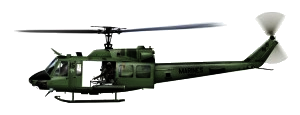Education

The Police Policy Study Council hosts a reprint of Dennis Tueller’s pioneering reaction-response distance study, first published in March 1983.
At what distance does this adversary enter your Danger Zone and become a lethal threat to you?
DISCLAIMER: Democratic Thinker is a member of the National Rifle Association—and Democratic Thinker supports the right of all citizens to defend themselves during all lawful activities anywhere they find themselves; be it public places, highways and byways, business establishments, churches, schools, etc.

This timeless classic, credited with first establishing the importance of maintaining a “reactionary gap,” appeared in the March 1983 issue of SWAT magazine.

by Dennis Tueller
The “good guy” with the gun against the “bad guy” with the knife (or machete, axe, club, tire-iron, etc.). “No contest”, you say. “The man with the gun can’t lose.” Or can he? A great deal depends on his ability with that gun and the proximity of his opponent.
If, for example, our hero shoots his would-be attacker at a distance of 20 yards, he loses. Not the fight, you understand, but most probably his freedom because he will almost certainly be charged with murder. The only thing that justifies your shooting another human being is the immediate need to stop him from trying to kill you (or someone else), remember?
If, on the other hand, our hero waits to fire until his attacker is within obvious striking distance, he may still lose. His shots may not stop his attacker instantly enough to keep him from using his knife.
So, what is the answer – just how close is too close?
Consider this. How long does it take for you to draw your handgun and place two center hits on a man-size target at seven yards? Those of us who have learned and practiced proper pistolcraft techniques would say that a time of about one and one-half seconds is acceptable for that drill.
With that in mind, let’s consider what might be called the “Danger Zone” if you are confronted by an adversary armed with an edged or blunt weapon. At what distance does this adversary enter your Danger Zone and become a lethal threat to you?
. . .
(Read the complete article at The Police Policy Studies Council)
Other related posts:
- ☞ Rethinking the 21-Foot Rule. Bob Irwin, Police, October 1, 2007.
- ☞ Revisiting the 21-Foot Rule. Jack Rumbaugh, USCCA, April 1, 2008.
- ☞ Revisiting the “21-Foot Rule.” Ron Martinelli, Police, September 18, 2014.
- ☞ The 21-Foot Rule Revisited. Jim Wilson, American Rifleman, Mach 16, 2015.
- ☞ Twenty-One Feet. Richard Mann, Shooting Illustrated, April 29, 2015.




















Recent Comments